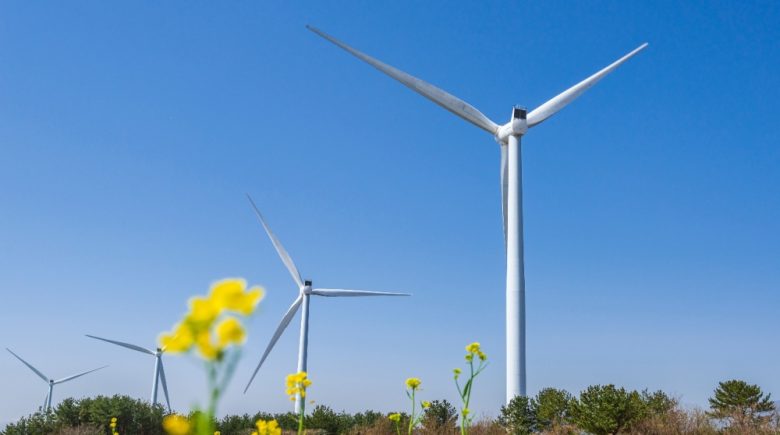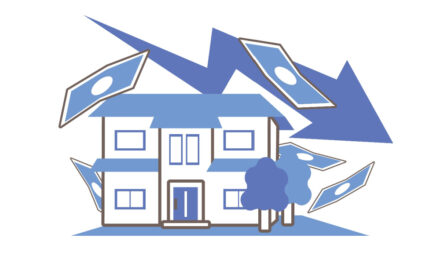Wind energy has emerged as a driving force in the global shift toward greener, more sustainable power sources. As the world faces the dual challenges of climate change and increasing energy demand, wind power has risen to the occasion—proving itself as an advanced, economically viable, and widely embraced source of clean energy. By significantly reducing greenhouse gas emissions and lessening dependence on fossil fuels, wind energy stands as one of the most promising solutions for a sustainable future.
This article explores how wind energy works, its benefits, technological advances, and its growing role in the global energy landscape.
How Wind Energy Works
Wind energy is harnessed when the wind turns the blades of a turbine, converting kinetic energy into mechanical energy. This is then transformed into electricity by a generator housed in the turbine’s nacelle. Output depends on factors such as wind speed, blade length, and turbine design.
Most modern turbines begin generating electricity when winds reach about 6–9 mph and automatically shut down at speeds above 55 mph for safety. Onshore turbines are often placed in open plains or hilltops, while offshore turbines are positioned in deep waters with stronger, steadier winds. Wind farms feed electricity directly into the grid, making them suitable for meeting large-scale energy needs.
Global Growth of Wind Power
Over the past two decades, wind energy has experienced unprecedented growth. By 2025, global installed capacity has surpassed 1,000 gigawatts, with China, the United States, Germany, and India leading the way.
While cost and technical challenges once slowed offshore wind projects, advances in technology and falling costs are driving rapid expansion. Europe remains the leader in offshore installations, and innovative floating turbine projects are now enabling energy generation in deeper waters. Many governments are setting ambitious wind power targets to cut carbon emissions and diversify energy sources, with emerging economies increasingly adopting wind power to meet their surging electricity demands.
This rapid growth signals that wind energy is no longer a niche sector—it is becoming a central pillar of the global energy mix.
Environmental and Economic Advantages
Wind energy is among the cleanest and most environmentally friendly energy sources. Unlike fossil fuel-based plants, wind turbines produce no greenhouse gases during operation and require no water for cooling. This makes them an ideal choice for reducing the environmental impact of power generation.
Economically, wind farms create jobs in construction, operation, and maintenance while providing steady income to rural communities through land lease agreements. Improved infrastructure often follows these investments. With the cost of wind power now competitive with fossil fuels—and with battery storage systems making wind energy increasingly reliable—wind has solidified its role as a resilient energy source for the future.
Technological Breakthroughs in Wind Energy
Recent innovations have made turbines more efficient, reliable, and cost-effective. Modern turbines are taller with longer blades, capturing more wind and generating greater output. Predictive maintenance, powered by advanced sensors, artificial intelligence, and machine learning, reduces downtime and repair costs.
Simplified direct-drive systems eliminate complex gearboxes, minimizing mechanical failures. Floating offshore turbines now make it possible to install wind farms in previously inaccessible deep-water locations. These advancements have significantly lowered the levelized cost of wind energy, enhancing its competitiveness with traditional power sources.
The Rise of Offshore Wind
Offshore wind has become a game-changer in renewable energy. Turbines at sea benefit from stronger, more consistent winds, enabling them to produce more electricity than many onshore systems.
While Europe continues to lead in offshore capacity, projects are now expanding rapidly in the United States, East Asia, and Australia. Floating turbines open new possibilities for deep-water installations, while modern designs are built to endure harsh marine environments. Governments are supporting offshore wind with subsidies, auctions, and long-term contracts, while advances in materials and installation methods continue to drive down costs.
This momentum is setting the stage for offshore wind to play a critical role in global clean energy production.
The Future of Wind Power
The outlook for wind energy is exceptionally bright, fueled by technological innovation, strategic investment, and widespread public support. Smart grids and energy storage systems will address intermittency, while hybrid renewable plants combining wind, solar, and batteries will offer 24-hour clean power.
Digital twin technology and real-time analytics will optimize turbine performance and extend their operational life. As more countries commit to net-zero carbon targets, wind energy will be central to meeting those goals. International energy cooperation and global grid connections will enable the efficient exchange of surplus wind power.
By 2030, wind energy could supply more than 20% of the world’s electricity—accelerating the transition to a low-carbon global economy.
Conclusion
Wind energy is no longer a vision of the future—it is a present-day force reshaping the global energy landscape. In 2025, it offers a proven, environmentally responsible, and economically viable path toward sustainability.
As technology advances, government policies strengthen, and international collaboration grows, wind power is poised to become the backbone of the world’s energy system. While challenges remain, the progress achieved so far demonstrates the power of coordinated action between science, policy, and industry.
Investing in wind energy means investing in a cleaner, healthier, and more resilient future. The wind of change is here—and it is only gaining speed.
Wind energy has emerged as a driving force in the global shift toward greener, more sustainable power sources. As the world faces the dual challenges of climate change and increasing energy demand, wind power has risen to the occasion—proving itself as an advanced, economically viable, and widely embraced source of clean energy. By significantly reducing greenhouse gas emissions and lessening dependence on fossil fuels, wind energy stands as one of the most promising solutions for a sustainable future.
This article explores how wind energy works, its benefits, technological advances, and its growing role in the global energy landscape.
How Wind Energy Works
Wind energy is harnessed when the wind turns the blades of a turbine, converting kinetic energy into mechanical energy. This is then transformed into electricity by a generator housed in the turbine’s nacelle. Output depends on factors such as wind speed, blade length, and turbine design.
Most modern turbines begin generating electricity when winds reach about 6–9 mph and automatically shut down at speeds above 55 mph for safety. Onshore turbines are often placed in open plains or hilltops, while offshore turbines are positioned in deep waters with stronger, steadier winds. Wind farms feed electricity directly into the grid, making them suitable for meeting large-scale energy needs.
Global Growth of Wind Power
Over the past two decades, wind energy has experienced unprecedented growth. By 2025, global installed capacity has surpassed 1,000 gigawatts, with China, the United States, Germany, and India leading the way.
While cost and technical challenges once slowed offshore wind projects, advances in technology and falling costs are driving rapid expansion. Europe remains the leader in offshore installations, and innovative floating turbine projects are now enabling energy generation in deeper waters. Many governments are setting ambitious wind power targets to cut carbon emissions and diversify energy sources, with emerging economies increasingly adopting wind power to meet their surging electricity demands.
This rapid growth signals that wind energy is no longer a niche sector—it is becoming a central pillar of the global energy mix.
Environmental and Economic Advantages
Wind energy is among the cleanest and most environmentally friendly energy sources. Unlike fossil fuel-based plants, wind turbines produce no greenhouse gases during operation and require no water for cooling. This makes them an ideal choice for reducing the environmental impact of power generation.
Economically, wind farms create jobs in construction, operation, and maintenance while providing steady income to rural communities through land lease agreements. Improved infrastructure often follows these investments. With the cost of wind power now competitive with fossil fuels—and with battery storage systems making wind energy increasingly reliable—wind has solidified its role as a resilient energy source for the future.
Technological Breakthroughs in Wind Energy
Recent innovations have made turbines more efficient, reliable, and cost-effective. Modern turbines are taller with longer blades, capturing more wind and generating greater output. Predictive maintenance, powered by advanced sensors, artificial intelligence, and machine learning, reduces downtime and repair costs.
Simplified direct-drive systems eliminate complex gearboxes, minimizing mechanical failures. Floating offshore turbines now make it possible to install wind farms in previously inaccessible deep-water locations. These advancements have significantly lowered the levelized cost of wind energy, enhancing its competitiveness with traditional power sources.
The Rise of Offshore Wind
Offshore wind has become a game-changer in renewable energy. Turbines at sea benefit from stronger, more consistent winds, enabling them to produce more electricity than many onshore systems.
While Europe continues to lead in offshore capacity, projects are now expanding rapidly in the United States, East Asia, and Australia. Floating turbines open new possibilities for deep-water installations, while modern designs are built to endure harsh marine environments. Governments are supporting offshore wind with subsidies, auctions, and long-term contracts, while advances in materials and installation methods continue to drive down costs.
This momentum is setting the stage for offshore wind to play a critical role in global clean energy production.
The Future of Wind Power
The outlook for wind energy is exceptionally bright, fueled by technological innovation, strategic investment, and widespread public support. Smart grids and energy storage systems will address intermittency, while hybrid renewable plants combining wind, solar, and batteries will offer 24-hour clean power.
Digital twin technology and real-time analytics will optimize turbine performance and extend their operational life. As more countries commit to net-zero carbon targets, wind energy will be central to meeting those goals. International energy cooperation and global grid connections will enable the efficient exchange of surplus wind power.
By 2030, wind energy could supply more than 20% of the world’s electricity—accelerating the transition to a low-carbon global economy.
Conclusion
Wind energy is no longer a vision of the future—it is a present-day force reshaping the global energy landscape. In 2025, it offers a proven, environmentally responsible, and economically viable path toward sustainability.
As technology advances, government policies strengthen, and international collaboration grows, wind power is poised to become the backbone of the world’s energy system. While challenges remain, the progress achieved so far demonstrates the power of coordinated action between science, policy, and industry.
Investing in wind energy means investing in a cleaner, healthier, and more resilient future. The wind of change is here—and it is only gaining speed.




